
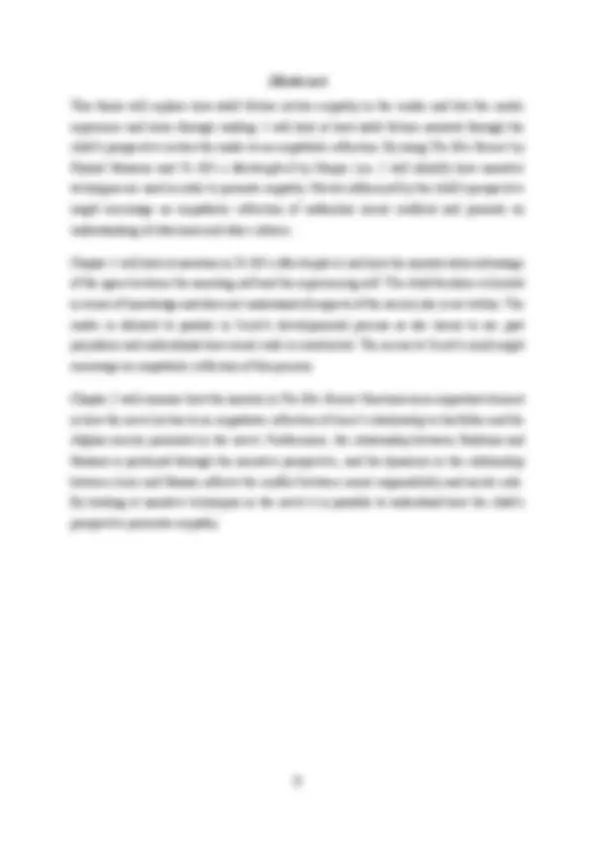



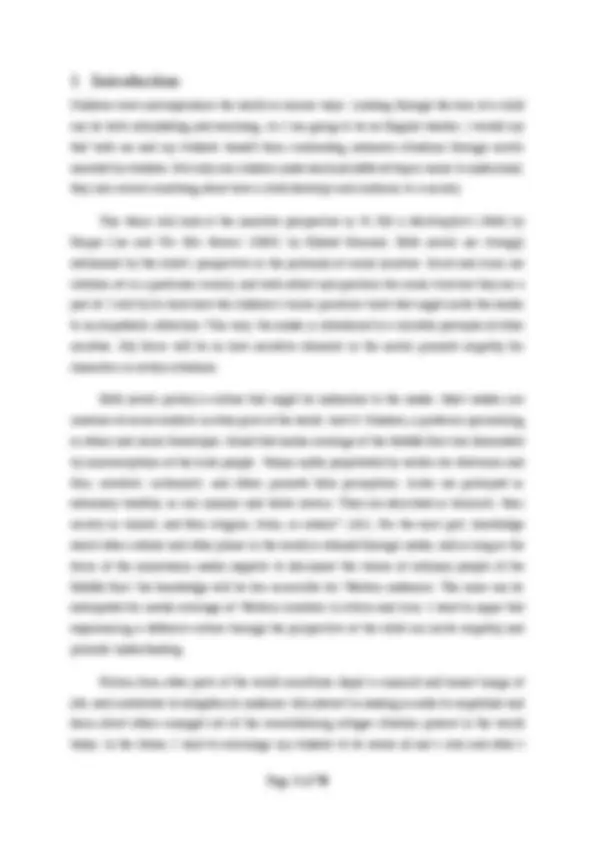
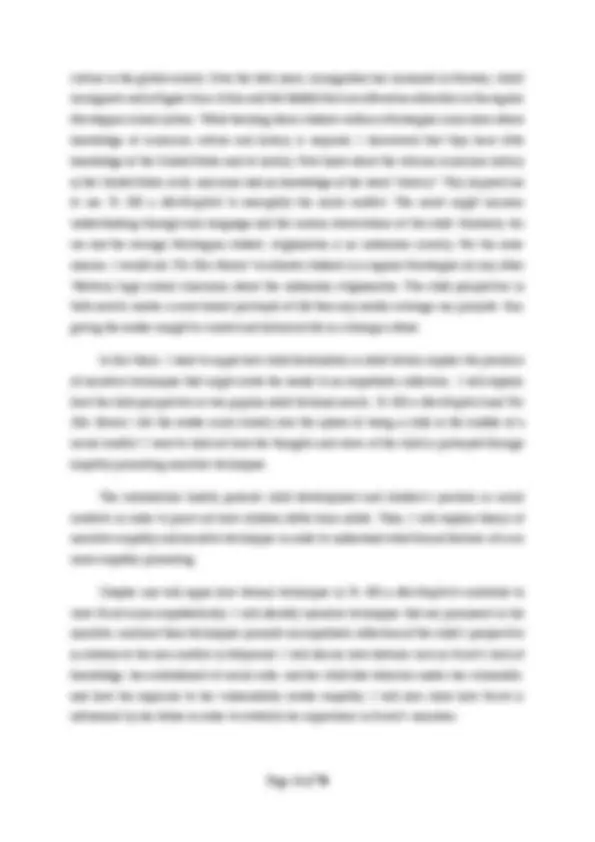
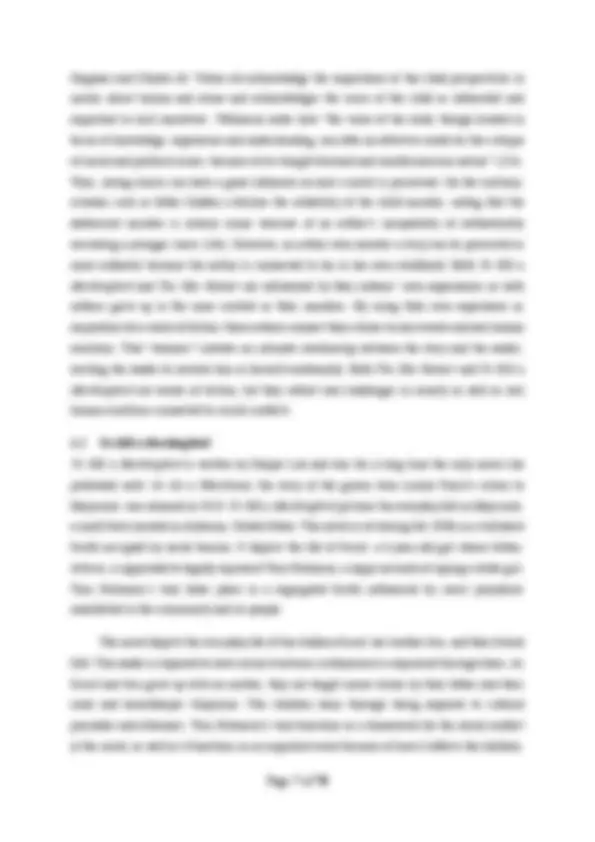
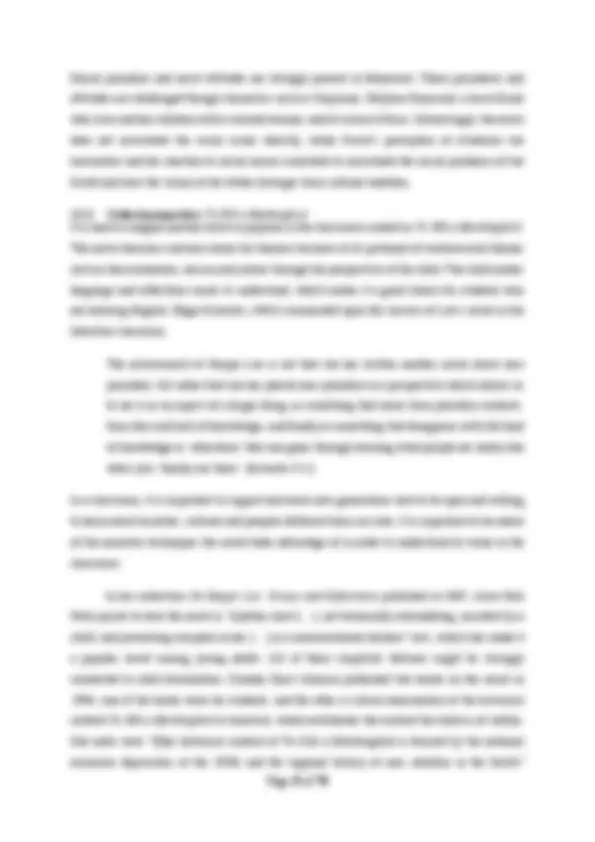
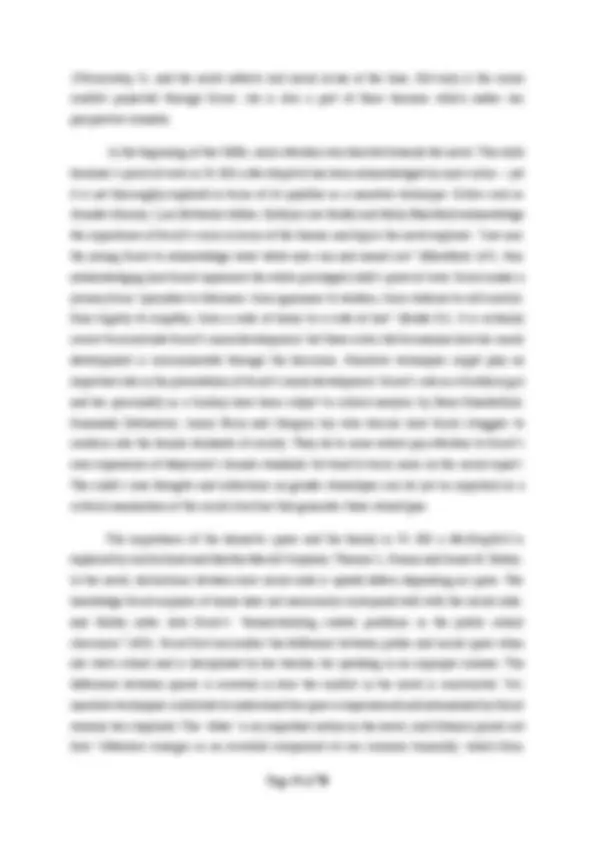
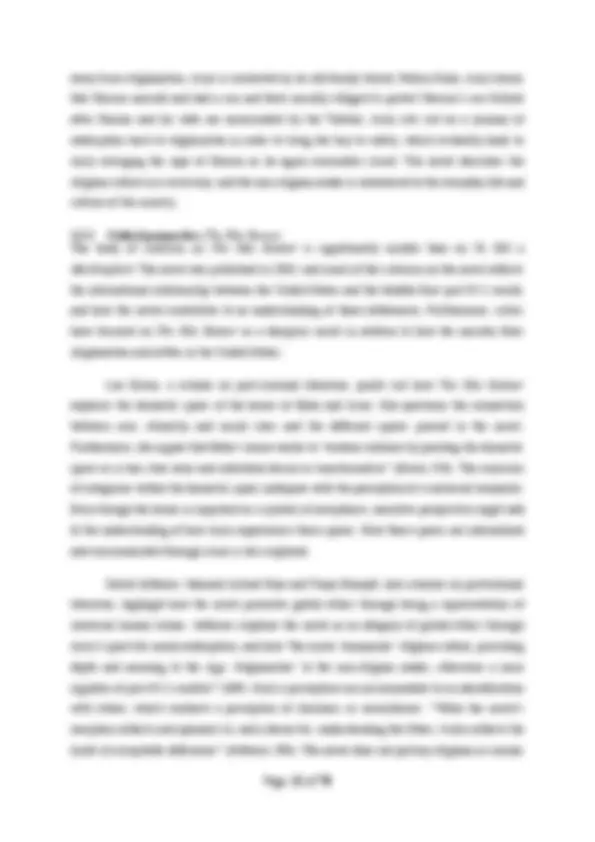
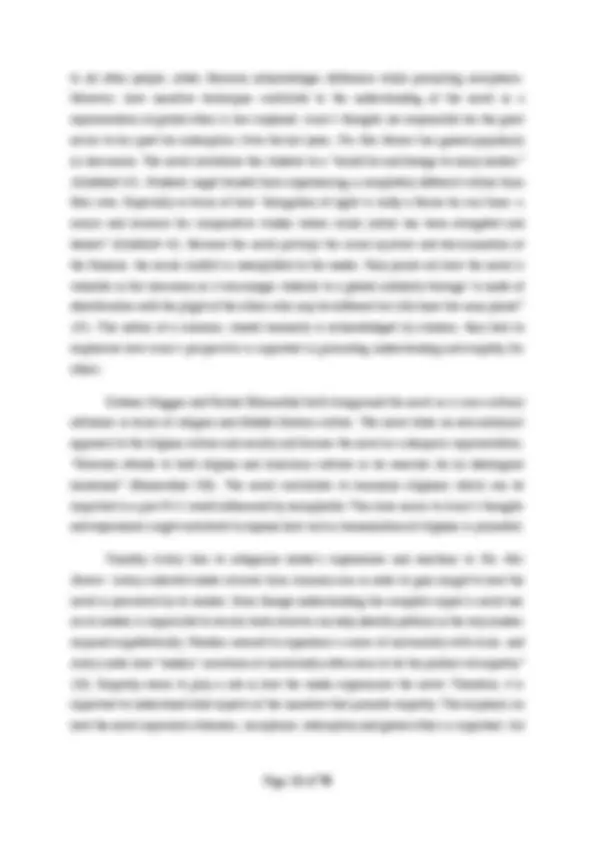
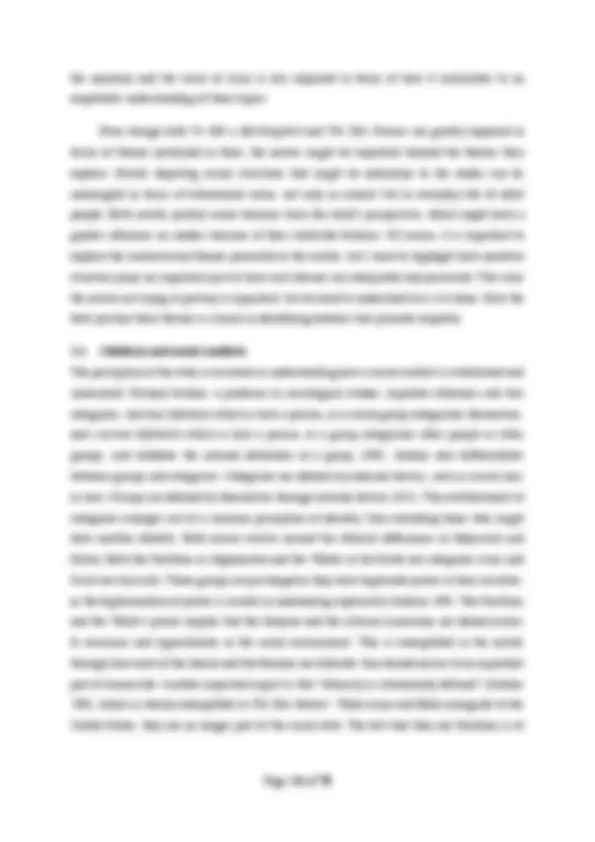
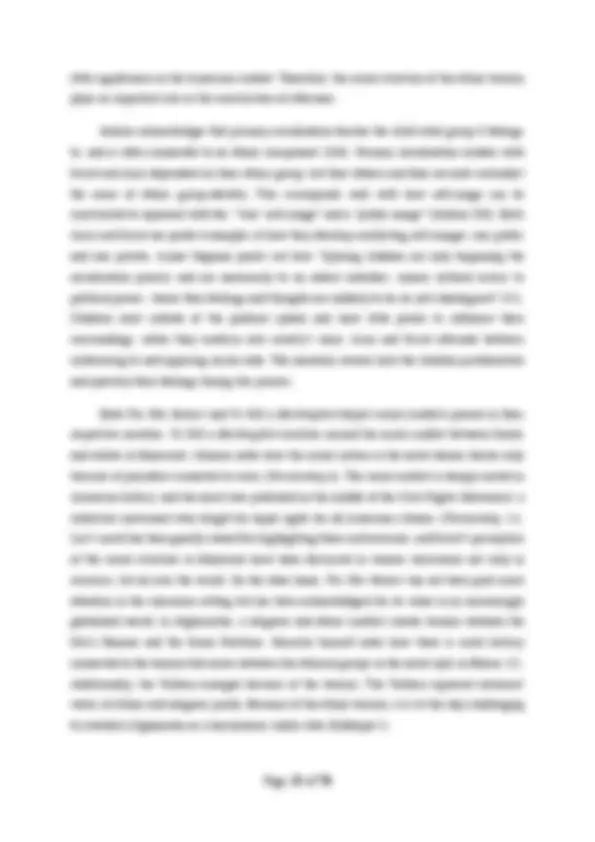
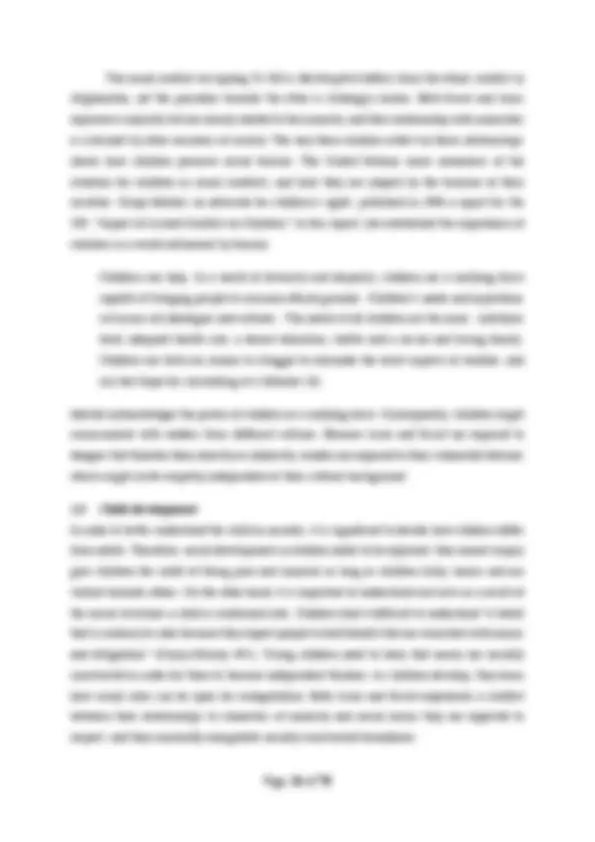
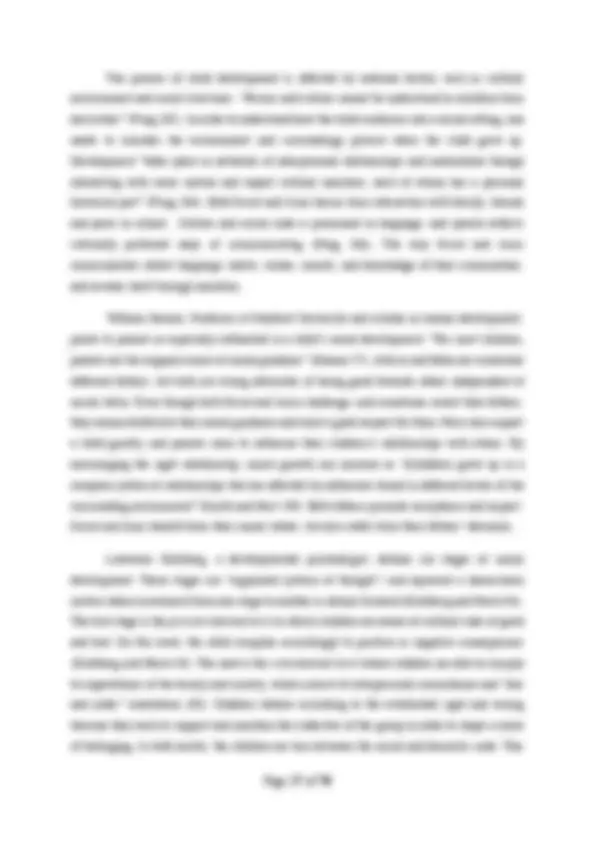
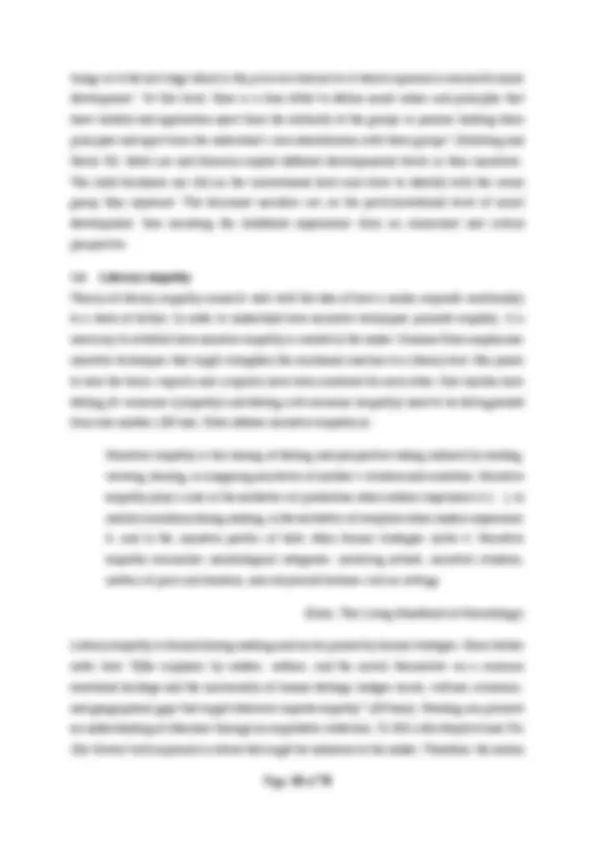
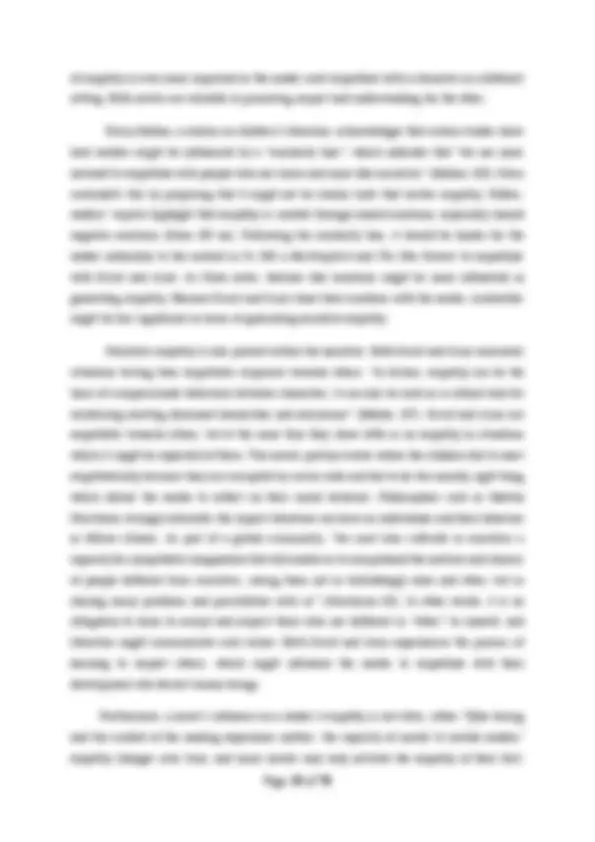
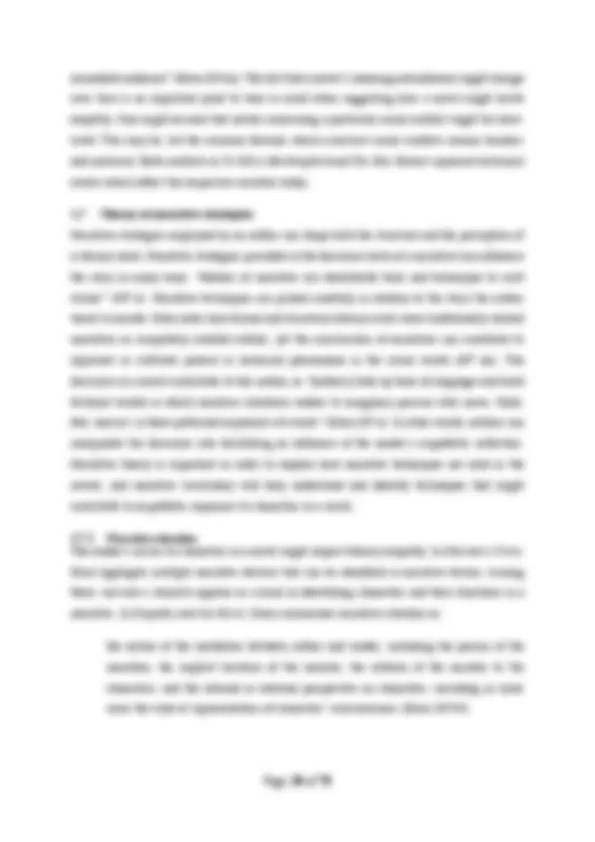
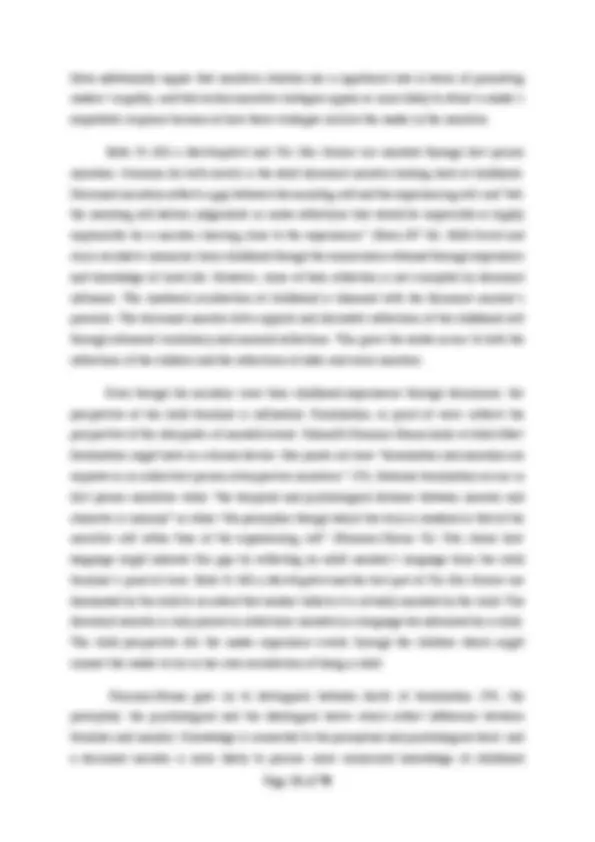
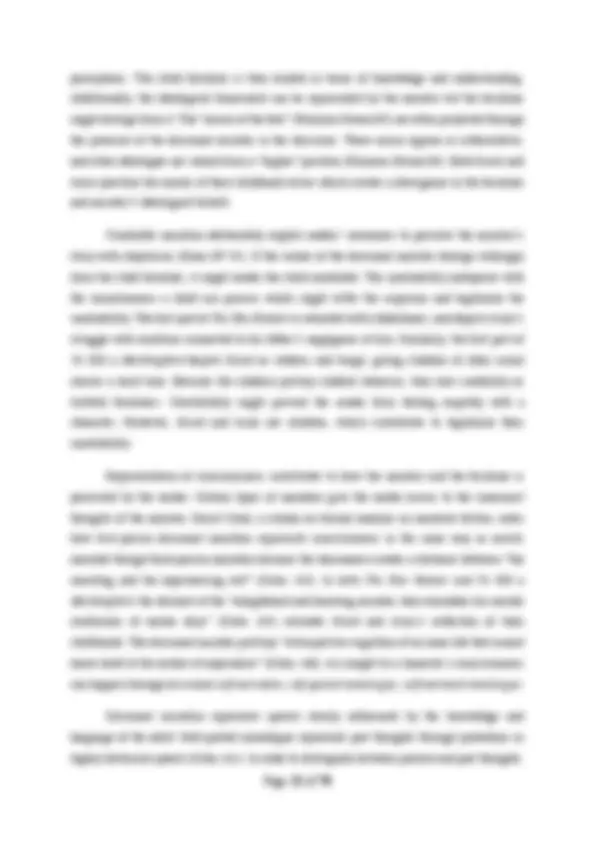
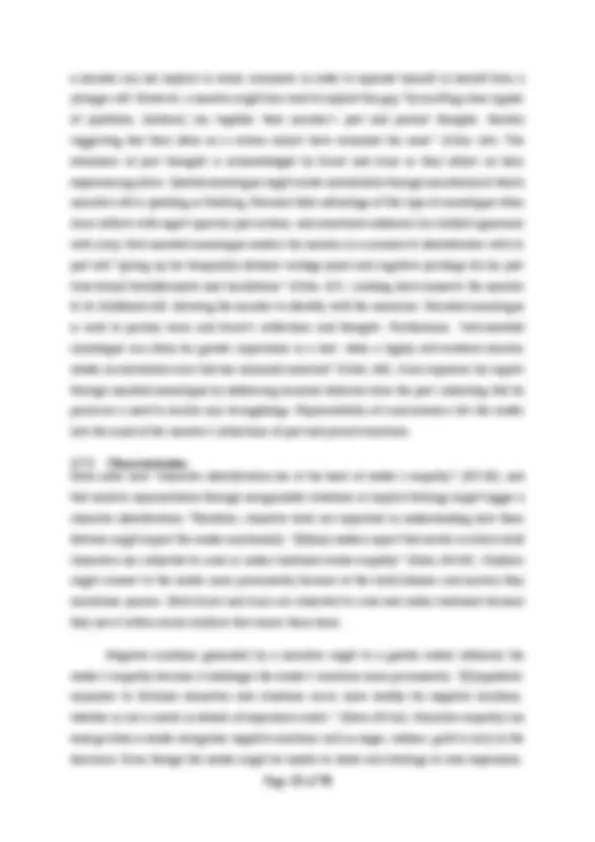
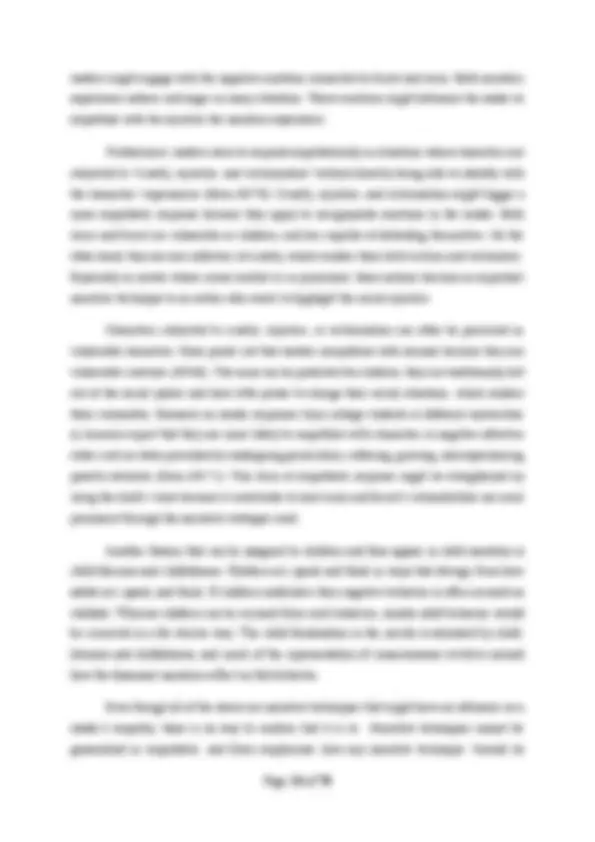

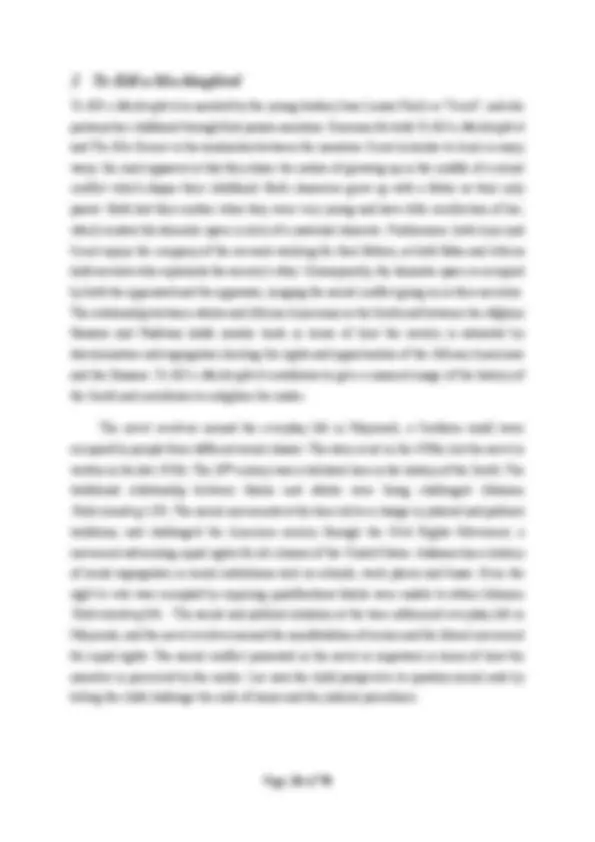
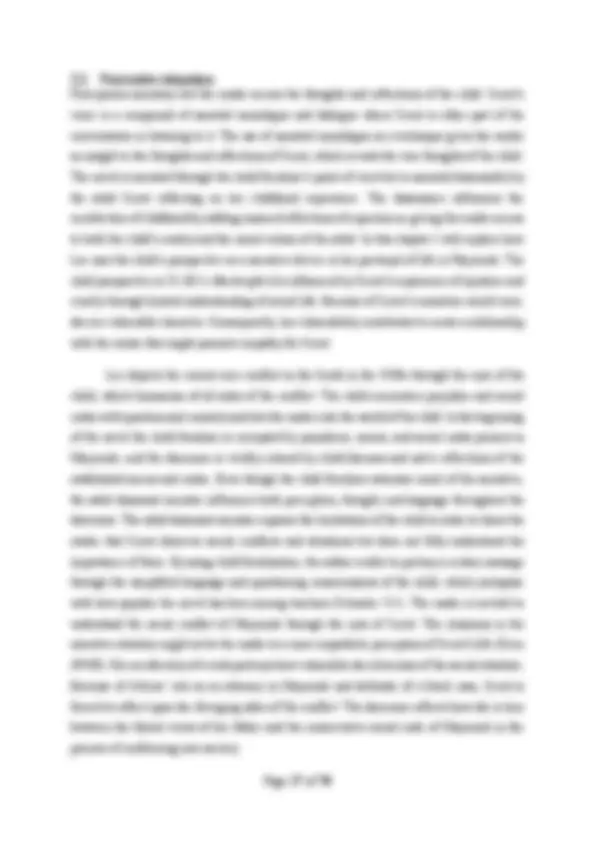
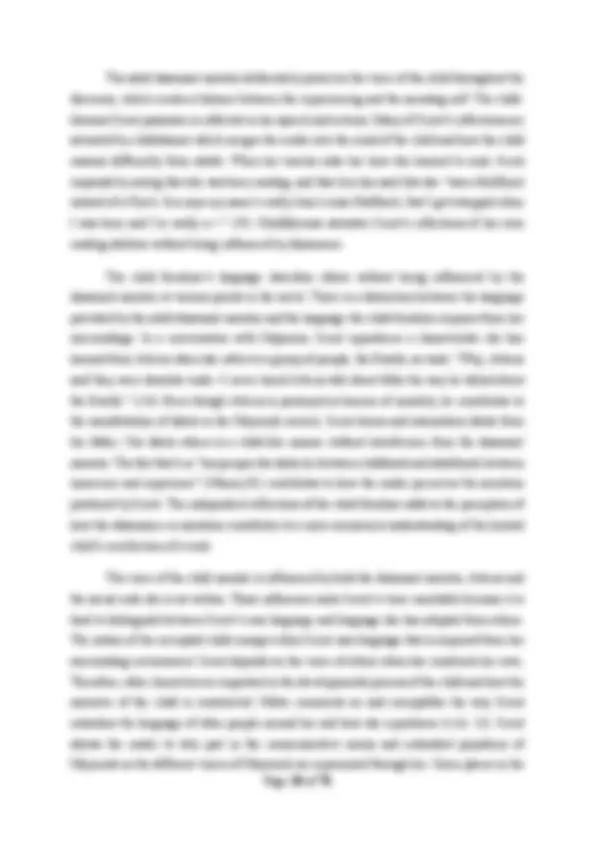
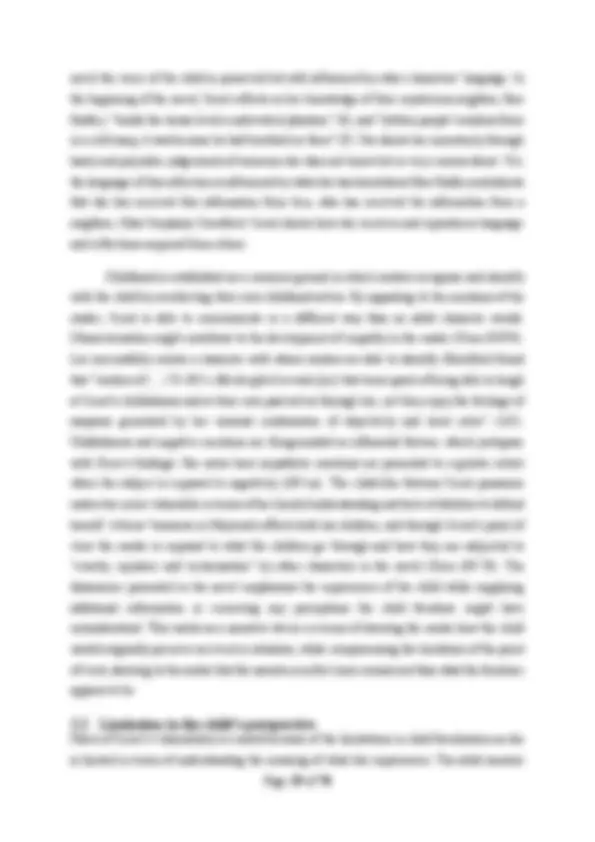
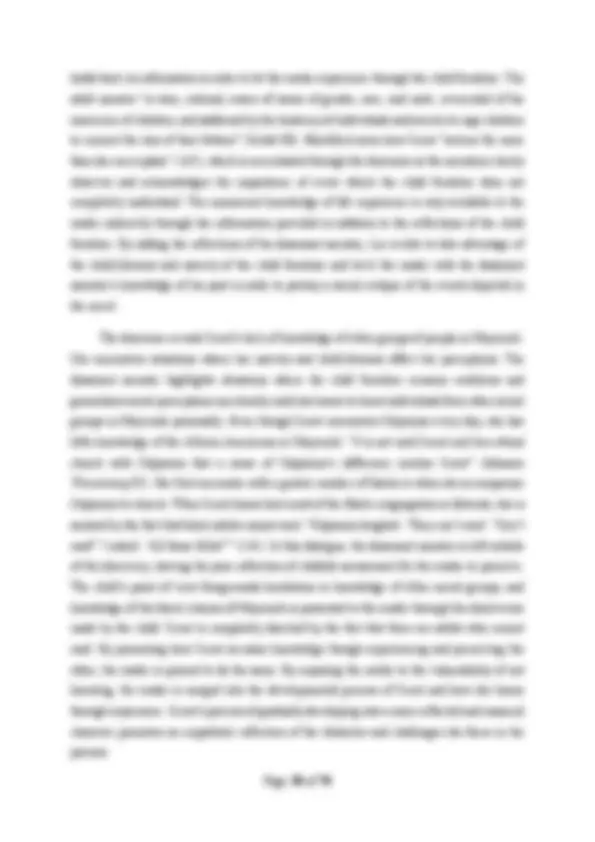

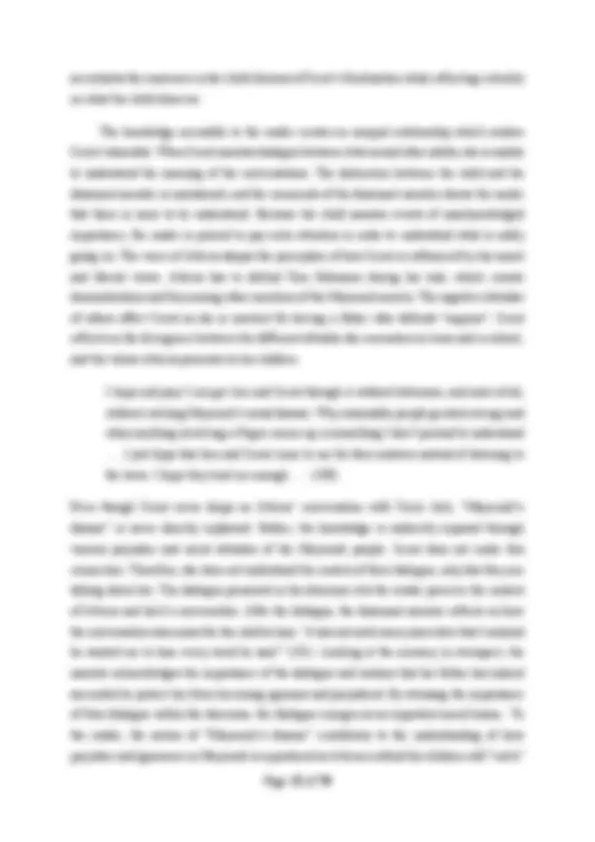
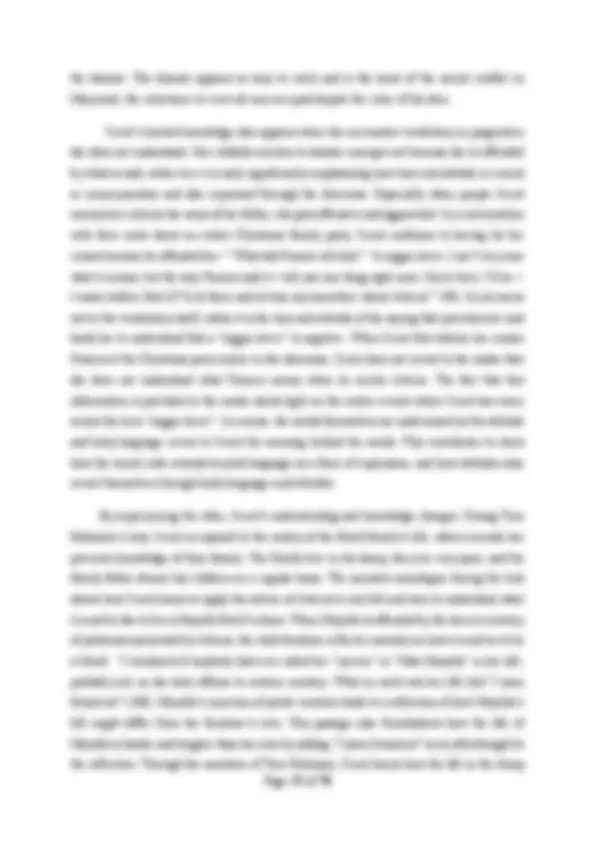
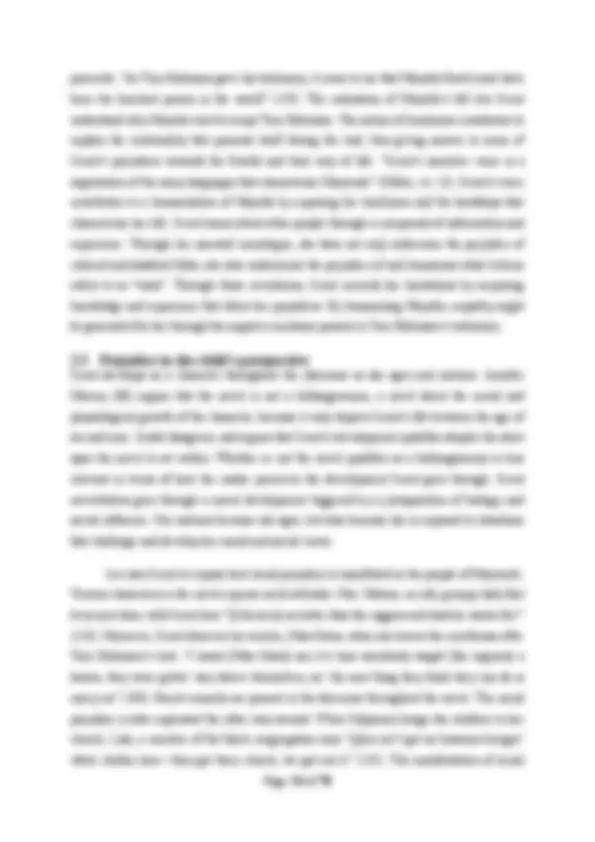
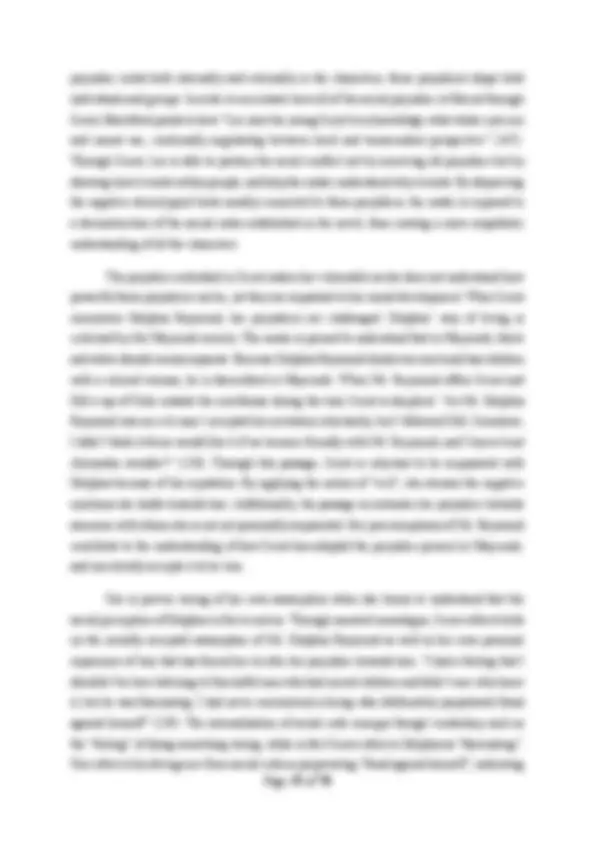
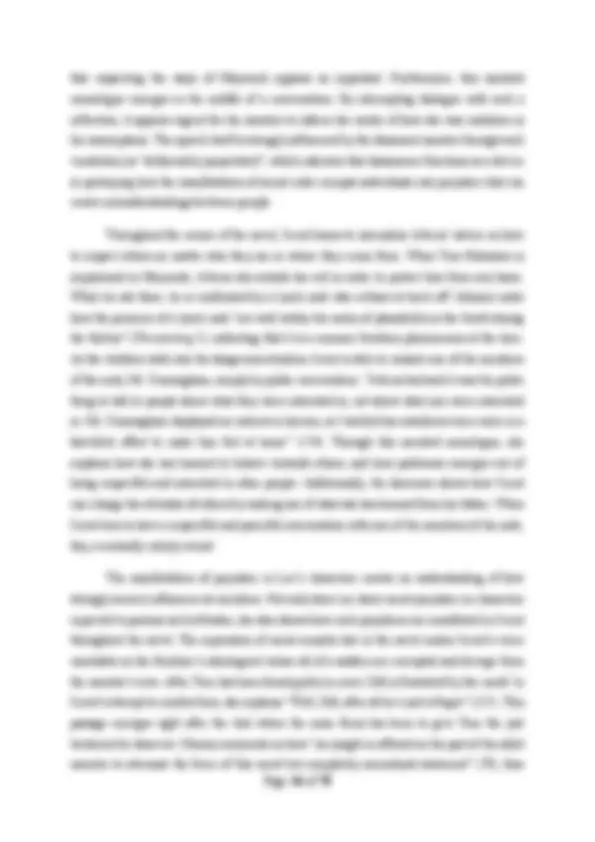
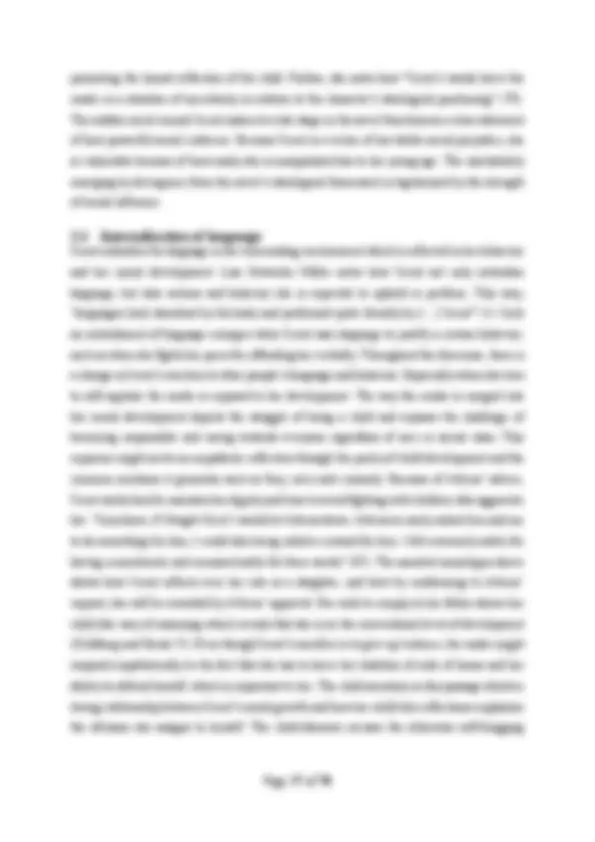
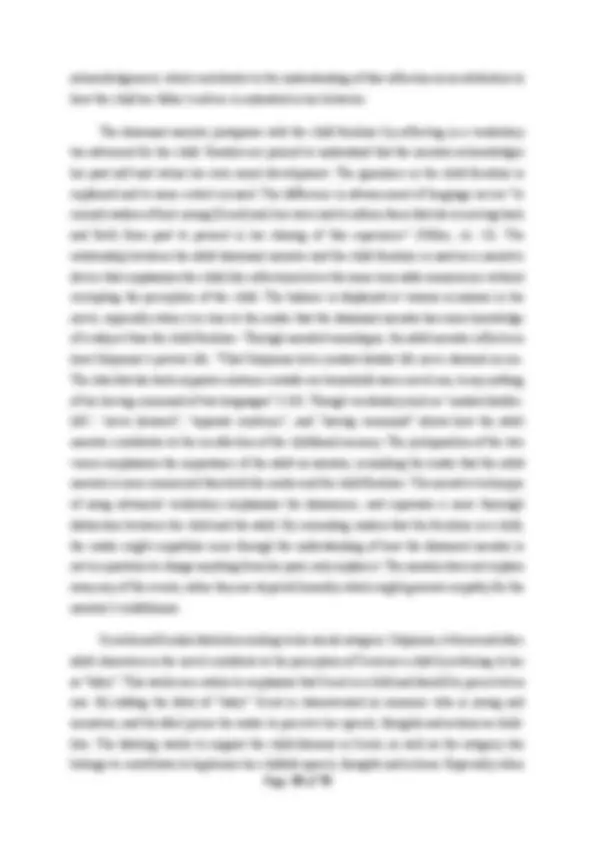

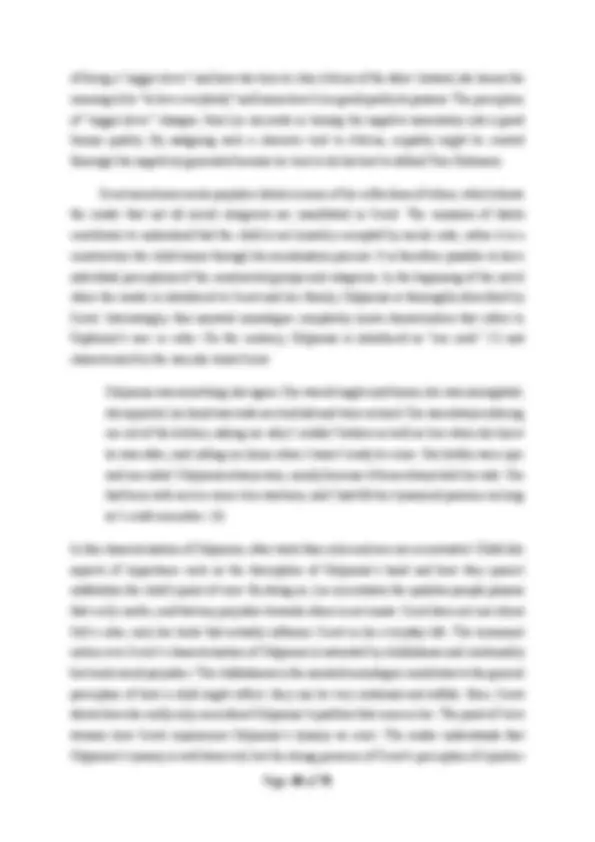
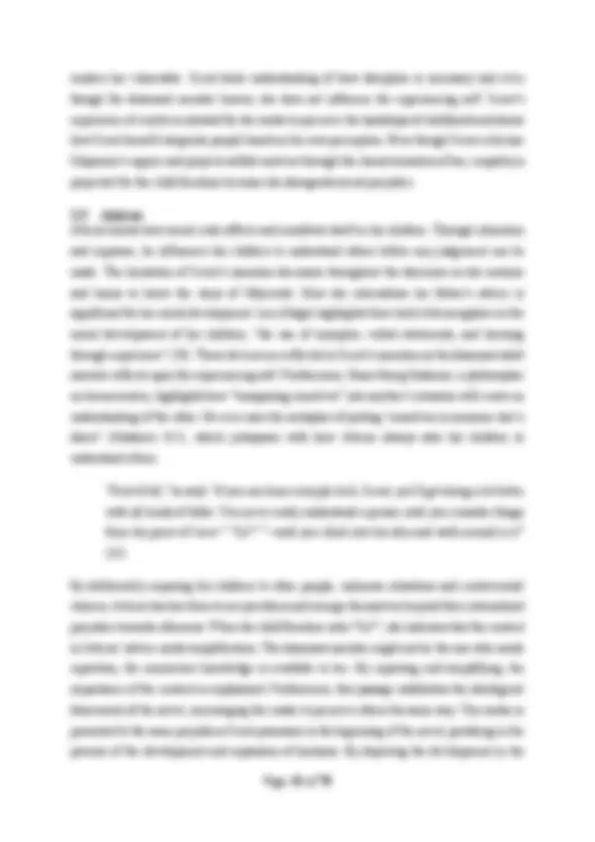
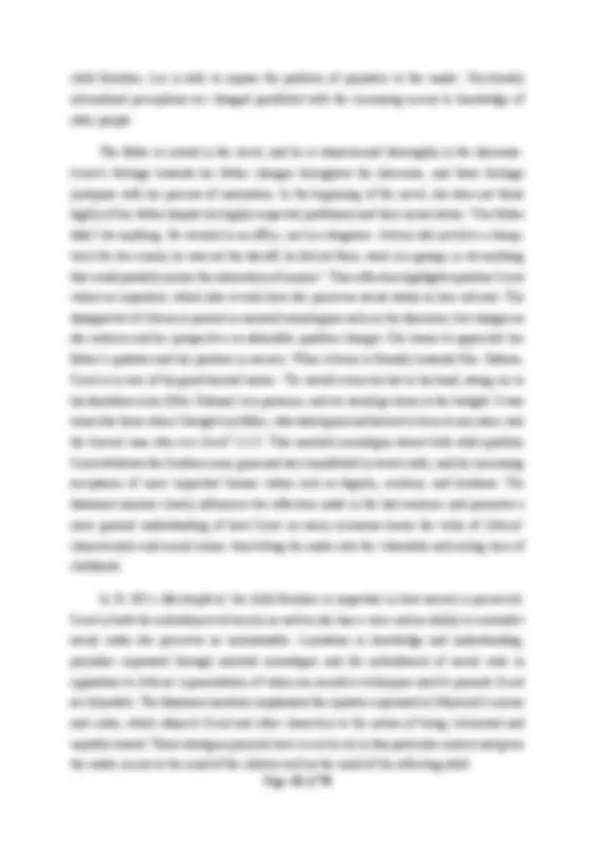
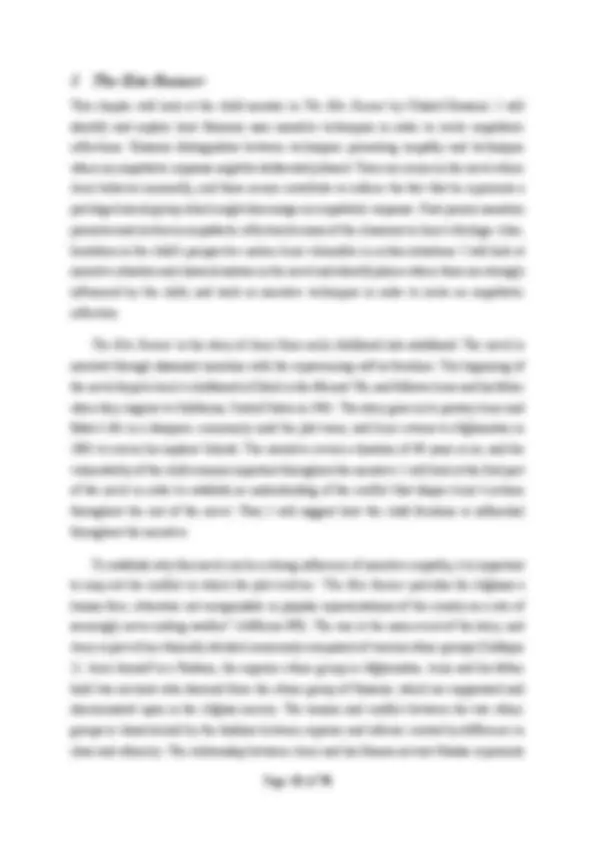
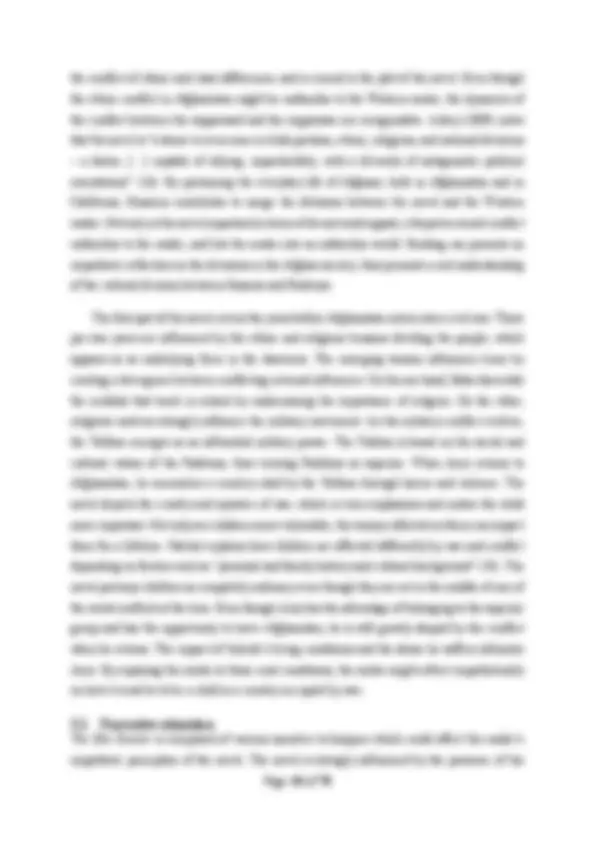
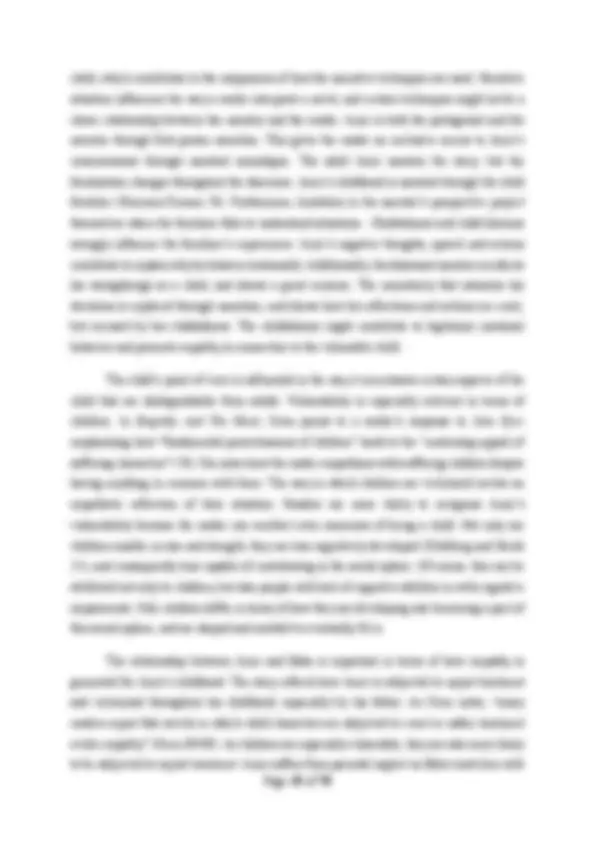
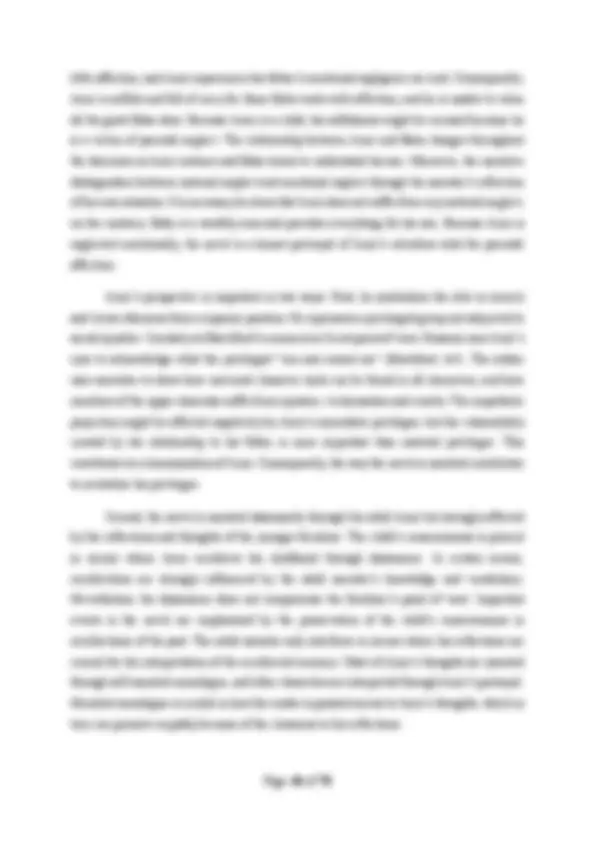
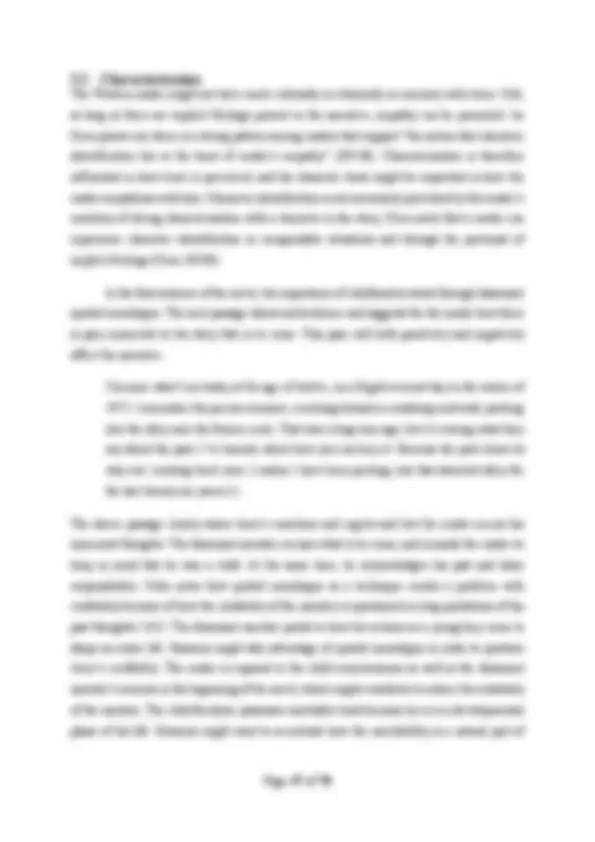
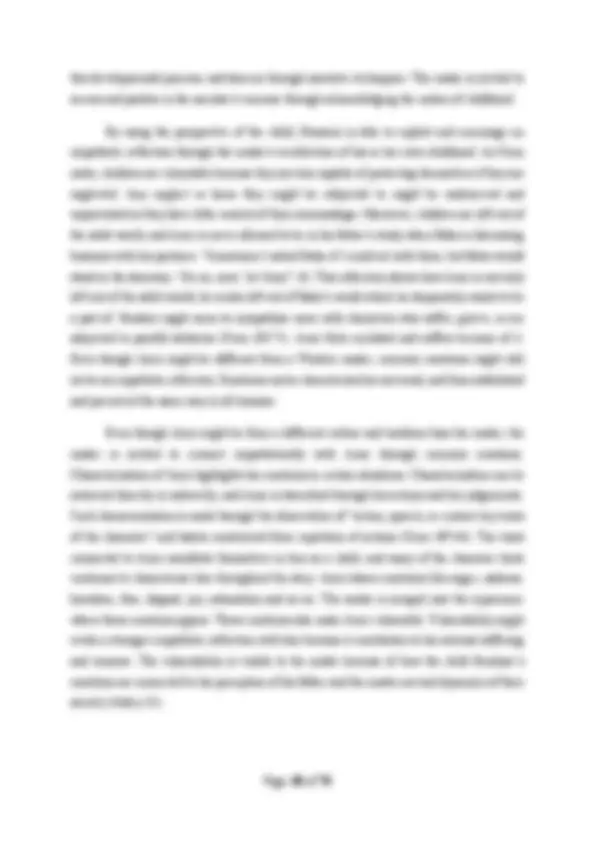
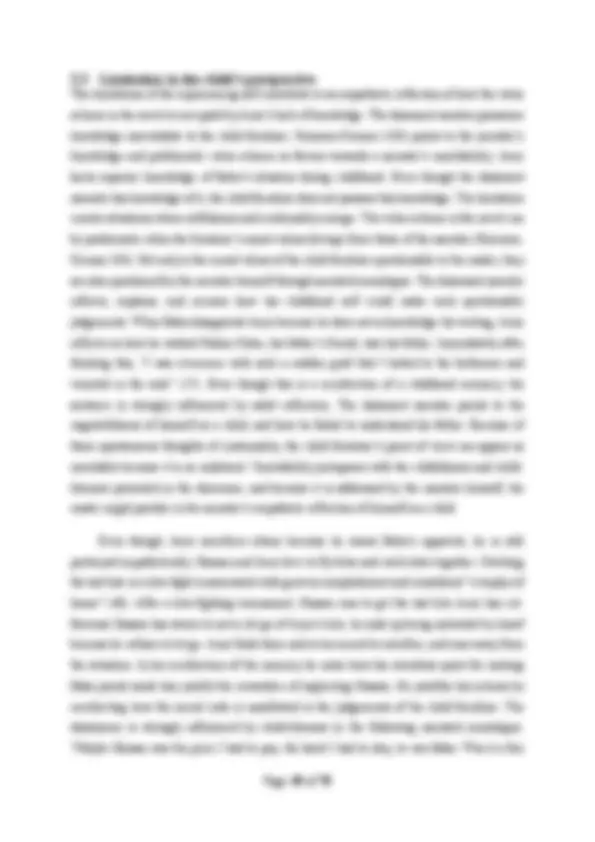
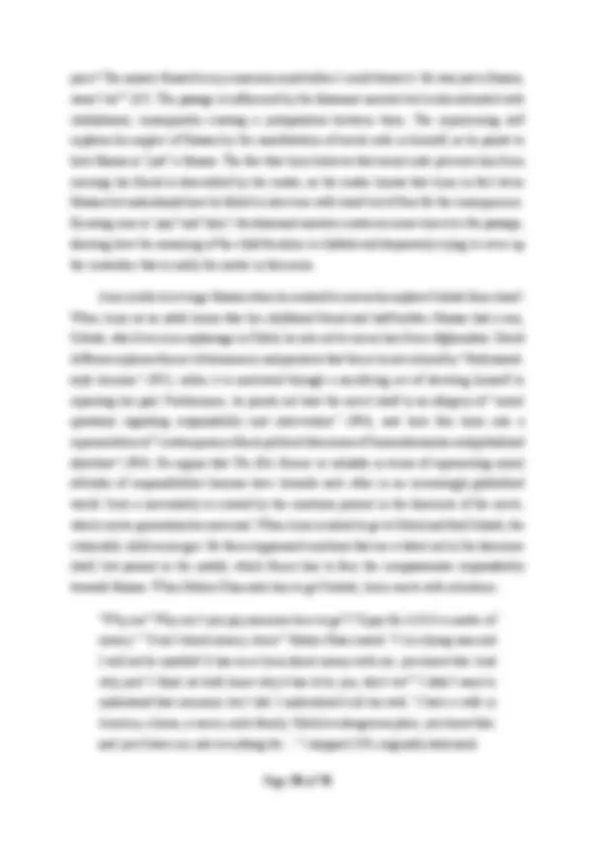
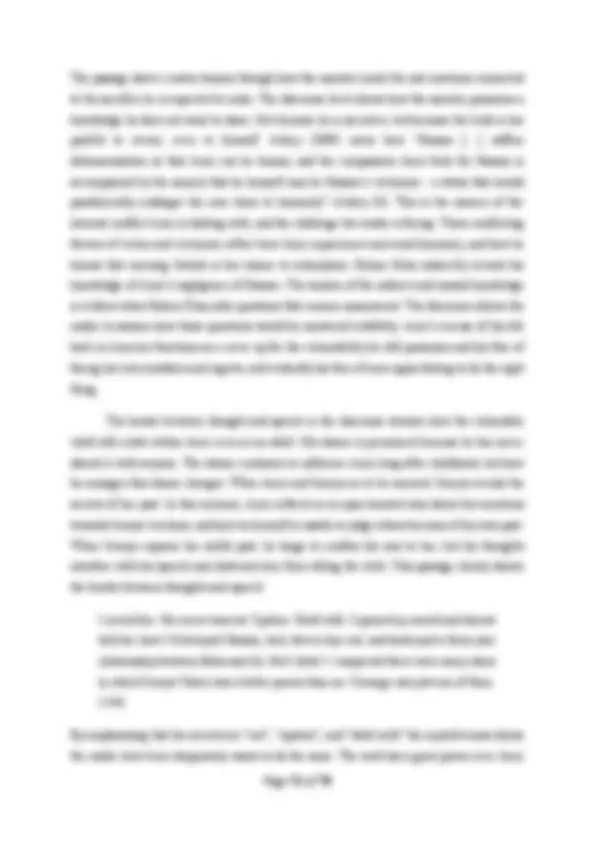
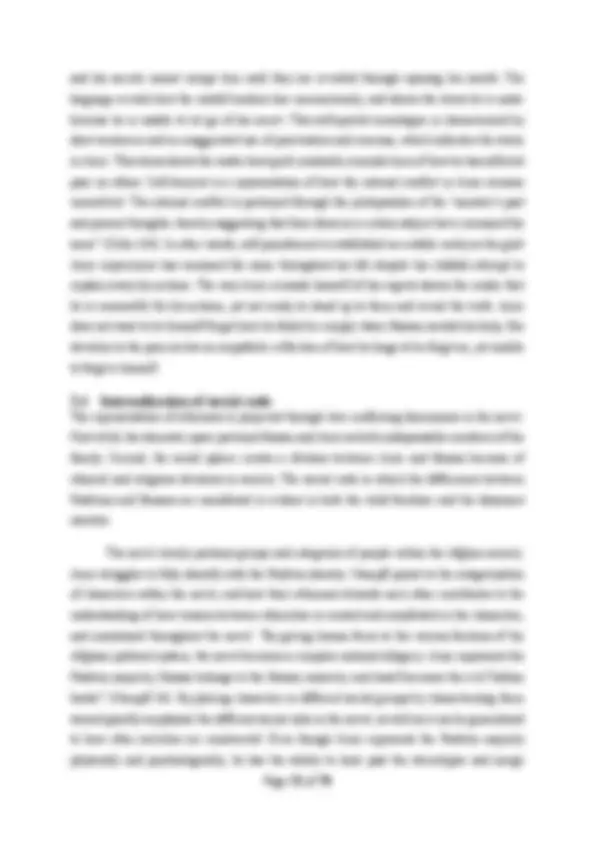
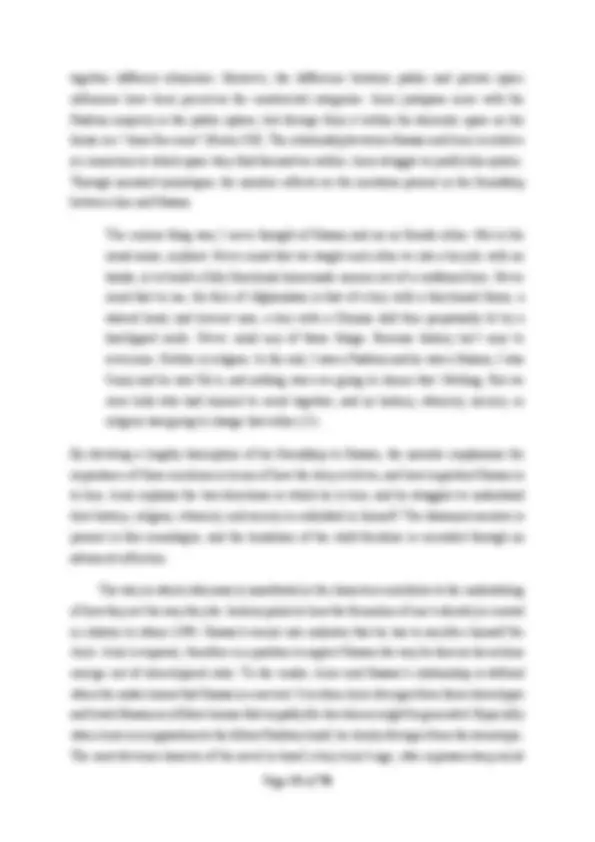
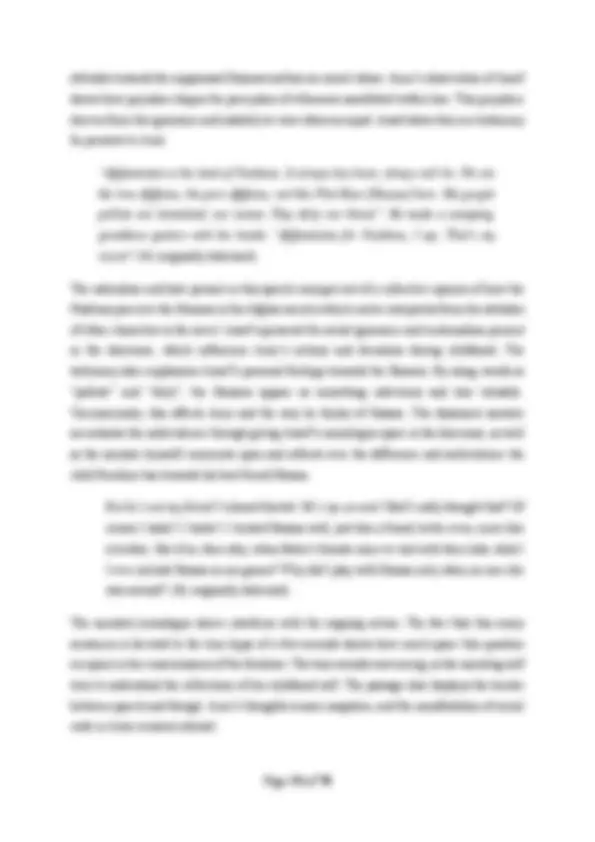
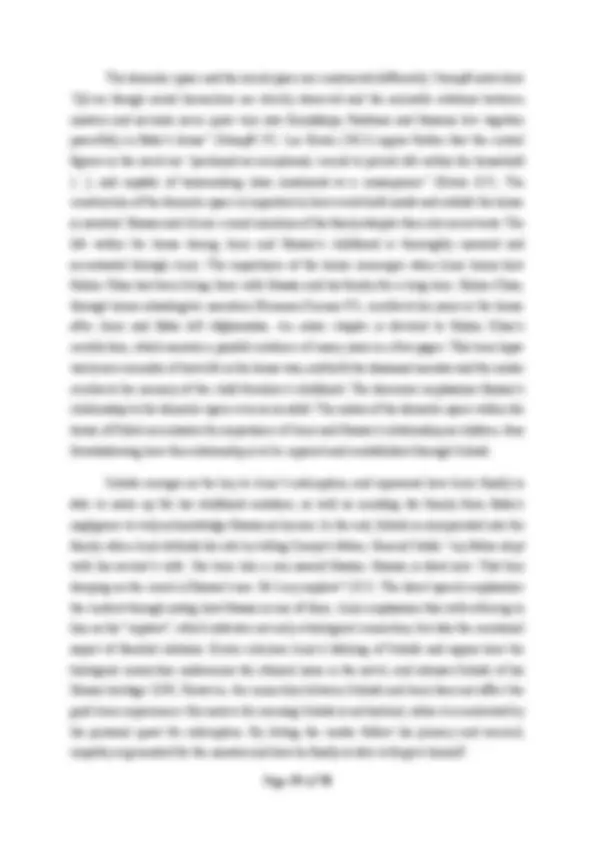
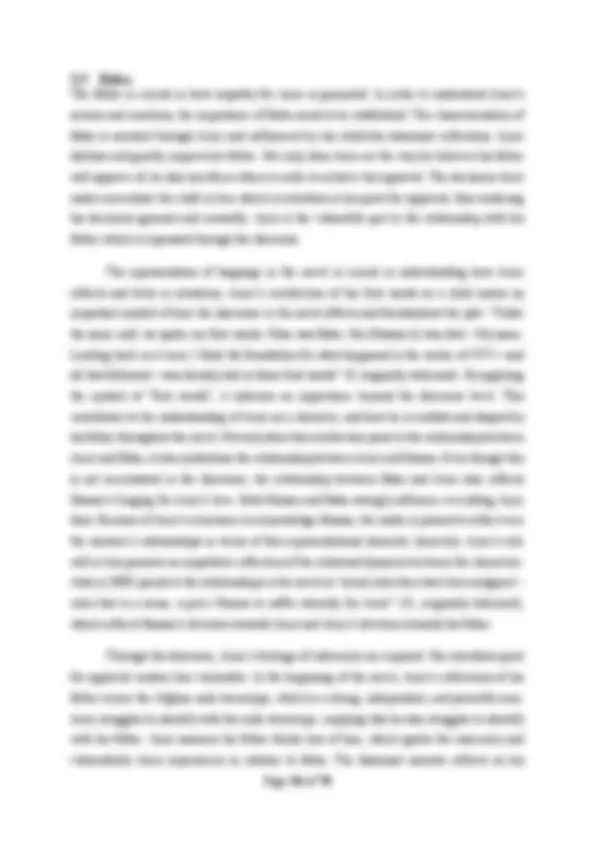
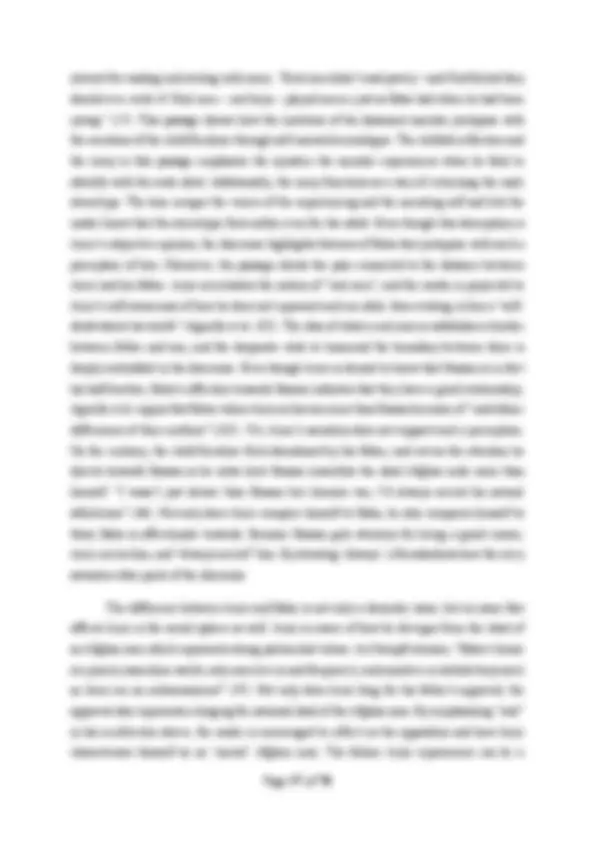
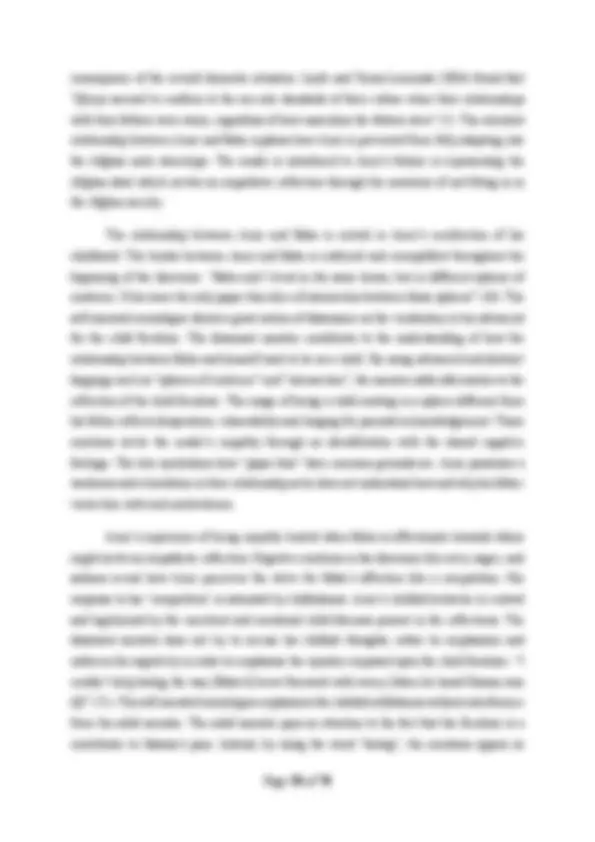
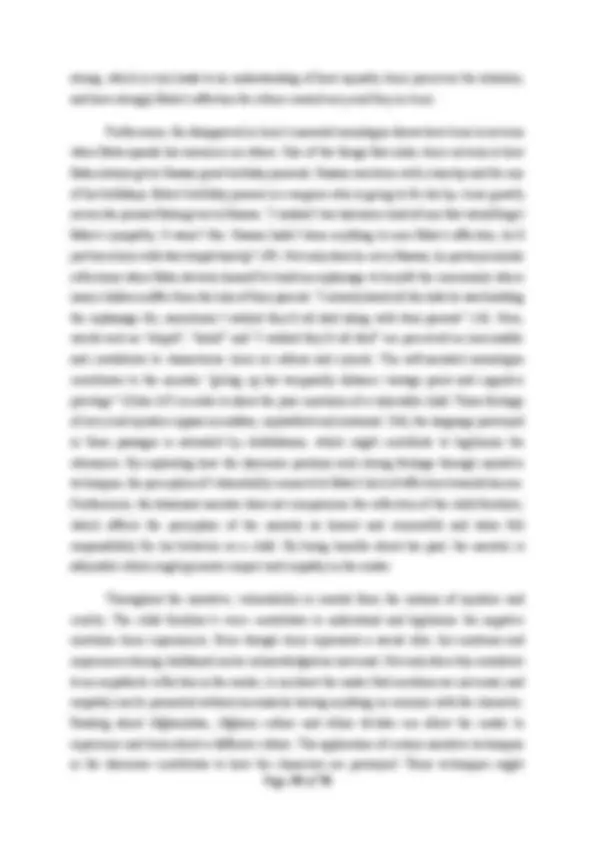

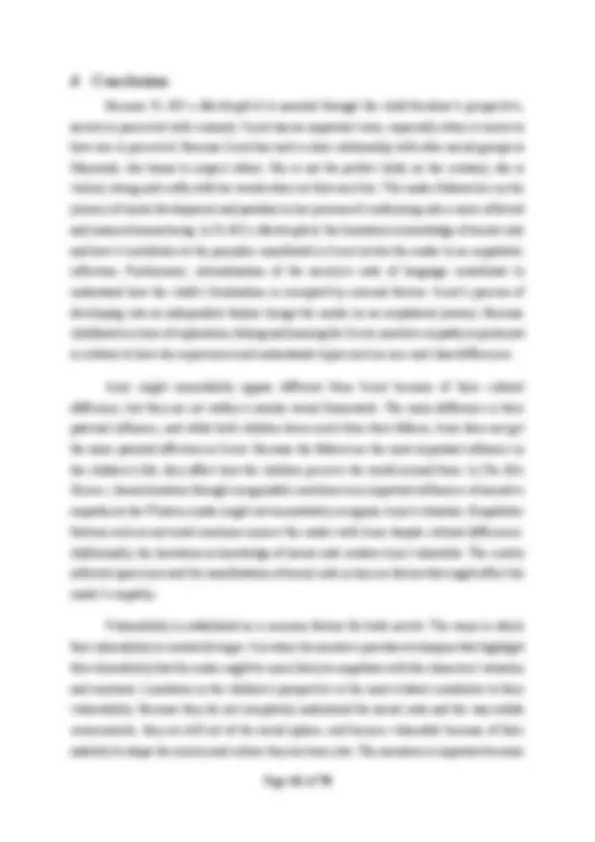
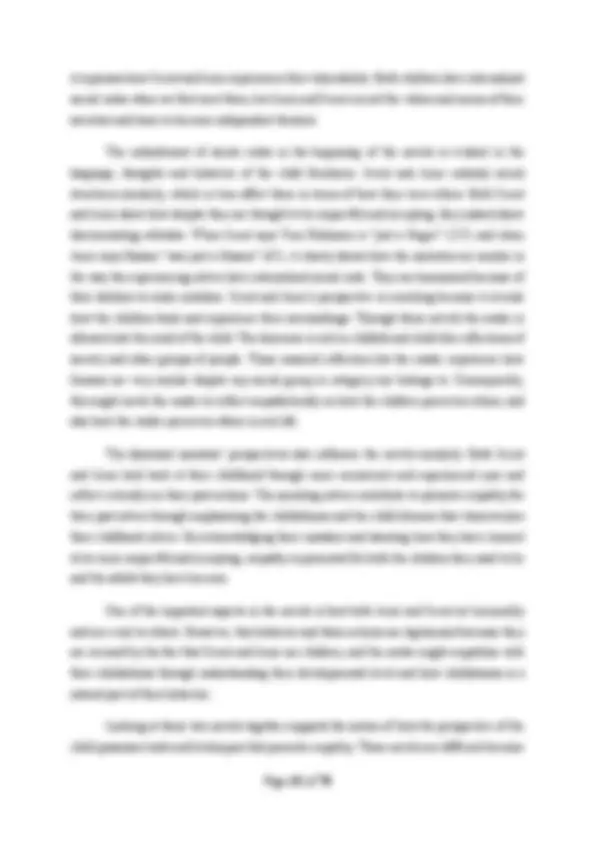
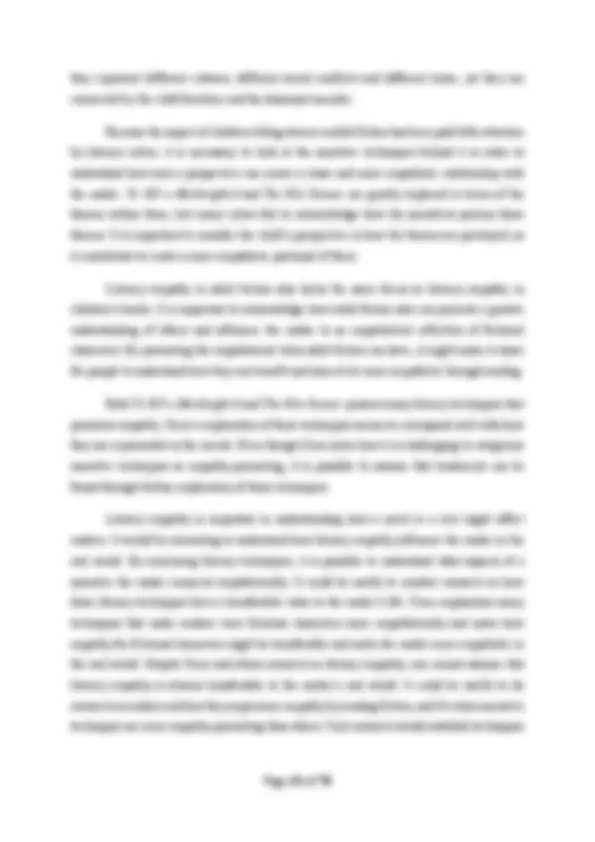
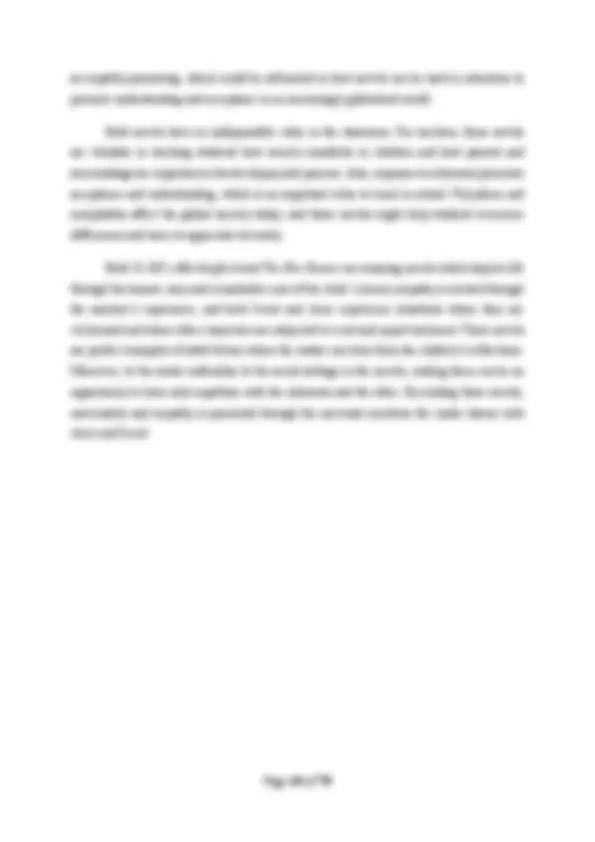
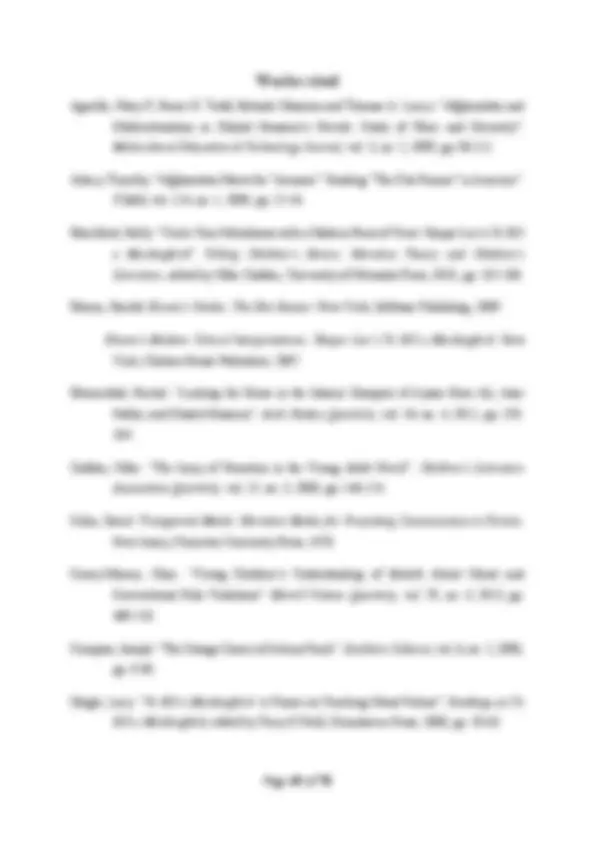







Study with the several resources on Docsity

Earn points by helping other students or get them with a premium plan


Prepare for your exams
Study with the several resources on Docsity

Earn points to download
Earn points by helping other students or get them with a premium plan
Community
Ask the community for help and clear up your study doubts
Discover the best universities in your country according to Docsity users
Free resources
Download our free guides on studying techniques, anxiety management strategies, and thesis advice from Docsity tutors
This thesis explores how child focalization in adult fiction, as demonstrated in 'To Kill a Mockingbird' and 'The Kite Runner', invites empathetic reflections from readers. Through the experiences of Scout and Amir, children set in complex social contexts, readers are encouraged to question societal norms and understand the impact of social codes on children's lives. the significance of child narrators, their vulnerability, and the limitations of their perspectives, ultimately highlighting the importance of empathy in literature.
Typology: Study notes
1 / 76

This page cannot be seen from the preview
Don't miss anything!





































































Faculty of Humanities, Social Sciences and Education
ENG- 3983 Master’s Thesis in English Literature and Education, 40 ECTS Spring 2018 Spring 2018
I want to thank my supervisor Cassandra Falke for support and guidance during the writing process, as well as my friends and family for moral support. I also want to thank my students who inspired me to read The Kite Runner and sparked the idea for this thesis.
Abstract .......................................................................................................................................................... II
culture in the global society. Over the later years, immigration has increased in Norway. Adult immigrants and refugees from Africa and the Middle East are offered an education in the regular Norwegian school system. While teaching these students within a Norwegian curriculum where knowledge of American culture and history is required, I discovered that they have little knowledge of the United States and its history. Few knew about the African-American history in the United States at all, and some had no knowledge of the word “slavery”. This inspired me to use To Kill a Mockingbird to exemplify the racial conflict. The novel might increase understanding through easy language and the curious observations of the child. Similarly, for me and the average Norwegian student, Afghanistan is an unfamiliar country. For the same reasons, I would use The Kite Runner to educate students in a regular Norwegian (or any other Western) high school classroom about the unfamiliar Afghanistan. The child perspective in both novels creates a more honest portrayal of life than any media coverage can promote, thus giving the reader insight to current and historical life in a foreign culture. In this thesis, I want to argue how child focalization in adult fiction implies the presence of narrative techniques that might invite the reader to an empathetic reflection. I will explore how the child perspective in two popular adult fictional novels, To Kill a Mockingbird and The Kite Runner, lets the reader more closely into the sphere of being a child in the middle of a social conflict. I want to find out how the thoughts and views of the child is portrayed through empathy-promoting narrative techniques. The introduction briefly presents child development and children’s position in social conflicts in order to point out how children differ from adults. Then, I will explain theory of narrative empathy and narrative techniques in order to understand what formal features of a are more empathy-promoting. Chapter one will argue how literary techniques in To Kill a Mockingbird contribute to view Scout more empathetically. I will identify narrative techniques that are prominent in the narrative, and how these techniques promote an empathetic reflection of the child’s perspective in relation to the race conflict in Maycomb. I will discuss how features such as Scout’s lack of knowledge, her embodiment of social code, and her child-like behavior makes her vulnerable, and how the exposure to her vulnerability invites empathy. I will also show how Scout is influenced by her father in order to establish his importance in Scout’s narration.
Chapter two will argue how empathy-promoting literary techniques in The Kite Runner create empathy for Amir. Narrative empathy is important in how the reader understands and empathizes with Amir’s portrayal of the Afghan culture and his quest for redemption. I will discuss how his limitations in terms of knowledge, his internalization of social code and his ambivalent relationship to his father invites the reader to an empathetic reflection. Overall, I wish to highlight how adult fiction narrated through the child’s perspective promotes empathy. Such novels possess literary techniques that promote and facilitate empathetic reflections. It is important to understand how children and the child’s perspective increases empathetic reflections by looking at features in these novels. Literary empathy is more prominent in novels narrated through the child’s perspective because empathy-promoting techniques are more frequent. Consequently, a reader might learn to be more empathetic by reading stories narrated through the child’s perspective. Fiction that promotes empathy can teach the reader to reflect over the characters they empathize with, which can lead to understanding and increase the ability to feel with others. 1.1 Child narration Child narrators are common to come across in literature for children. Children’s books are dominated by young characters who confront various topics and situations where their moral sense is tested. “Reading children’s literature is often considered important for developing […] children’s ethical and empathic understanding of society and its people” (Mallan 105). Even though there are exceptions, children’s books tend to be narrated by children, often on the verge of a moral journey. “Children’s literature is, at least in part, about control, and the primary result of that is that it reflects first of all what society wishes itself to be seen as, and secondly, subconsciously and retrospectively, what it is actually like” (Hunt 8). Children learn empathy through reading about the life and experiences of another child. Children’s books and their narrators have a great responsibility to teach children about empathy and moral values. Suzanne Keen^1 , a Professor in English at Washington and Lee University and a scholar of narrative empathy, highlights the importance of reading for children. She foregrounds how childhood reading might influence a person’s ability to empathize, and shape that person’s empathetical abilities for the future (Keen EN 69). (^1) I will refer to Keen’s books Empathy and the Novel and Narrative Form as EN and NF.
Gagiano and Charles M. Tatum all acknowledge the importance of the child perspectives in novels about trauma and abuse and acknowledges the voice of the child as influential and important in such narratives. Wilkinson notes how “the voice of the child, though limited in terms of knowledge, experience and understanding, can offer an effective mode for the critique of social and political issues, because of its straight-forward and unselfconscious nature” (124). Thus, young voices can have a great influence on how a novel is perceived. On the contrary, scholars such as Mike Cadden criticizes the reliability of the child narrator, noting that the adolescent narrator is always ironic because of an author’s incapability of authentically recreating a younger voice (146). However, an author who narrates a story can be perceived as more authentic because the author is connected to his or her own childhood. Both To Kill a Mockingbird and The Kite Runner are influenced by their authors’ own experiences as both authors grew up in the same context as their narrators. By using their own experience as inspiration for a work of fiction, these authors connect their stories to real events and real human emotions. That “realness” initiates an intimate relationship between the story and the reader, inviting the reader to involve him or herself emotionally. Both The Kite Runner and To Kill a Mockingbird are works of fiction, but they reflect real challenges in society as well as real human emotions connected to social conflicts. 1.2 To Kill a Mockingbird To Kill a Mockingbird is written by Harper Lee and was for a long time the only novel she published until Go Set a Watchman , the story of the grown Jean Louise Finch’s return to Maycomb, was released in 2015. To Kill a Mockingbird pictures the everyday life in Maycomb, a small town located in Alabama, United States. The novel is set during the 1930s in a turbulent South occupied by racial tension. It depicts the life of Scout, a 6-year-old girl whose father, Atticus, is appointed to legally represent Tom Robinson, a negro accused of raping a white girl. Tom Robinson’s trial takes place in a segregated South influenced by racist prejudices manifested in the community and its people. The novel depicts the everyday life of the children Scout, her brother Jem, and their friend Dill. The reader is exposed to how social structures in Maycomb is expressed through them. As Scout and Jem grow up with no mother, they are taught moral values by their father and their cook and housekeeper Calpurnia. The children learn through being exposed to cultural prejudice and otherness. Tom Robinson’s trial functions as a framework for the racial conflict in the novel, as well as it functions as an important event because of how it affects the children.
Racial prejudice and racist attitudes are strongly present in Maycomb. These prejudices and attitudes are challenged though characters such as Calpurnia, Dolphus Raymond, a local drunk who lives and has children with a colored woman, and of course Atticus. Interestingly, the novel does not accentuate the social issues directly, rather Scout’s perception of situations she encounters and her reaction to social norms contribute to accentuate the social problems of the South and how the vision of her father diverges from cultural tradition. 1.2.1 Critical perspective: To Kill a Mockingbird It is hard to imagine another novel so popular in the classroom context as To Kill a Mockingbird. The novel became a natural choice for teachers because of its portrayal of controversial themes such as discrimination, racism and justice through the perspective of the child. The child makes language and reflections easier to understand, which makes it a good choice for students who are learning English. Edgar Schuster (1963) commented upon the success of Lee’s novel in the literature classroom. The achievement of Harper Lee is not that she has written another novel about race prejudice, but rather that she has placed race prejudice in a perspective which allows us to see it as an aspect of a larger thing; as something that arises from phantom contacts, from fear and lack of knowledge; and finally as something that disappears with the kind of knowledge or ‘education’ that one gains through learning what people are really like when you ‘finally see them’ (Schuster 511) In a classroom, it is important to support and teach new generations how to be open and willing to learn about societies, cultures and peoples different from our own. It is important to be aware of the narrative techniques the novel takes advantage of in order to understand its value in the classroom. In her collection On Harper Lee: Essays and Reflections published in 2007, Alice Hall Petry points to how the novel is “[r]ather short […], not technically intimidating, narrated by a child, and presenting complex issues […] in a nonsensational fashion” (xv), which has made it a popular novel among young adults. All of these simplistic features might be strongly connected to child focalization. Claudia Durst Johnson published two books on the novel in 1996 ; one of the books were for students, and the other a critical examination of the historical context To Kill a Mockingbird is based on, which establishes the context the child is set within. She notes how “[t]he historical context of To Kill a Mockingbird is formed by the national economic depression of the 1930s and the regional history of race relations in the South”
infancy calls for a natural caution, suspicion, fear and anxiety when confronted by the other” (33). He emphasizes how otherness is perceived by Scout, and how such otherness is defined in Maycomb. Narration highlights how otherness is reflected upon, and narrative techniques contribute to view the other more empathetically. The novel revolves around society’s perception of the other, but Scout’s narrative perspective shows how she has not fully internalized these perceptions. Despite critics’ great interest in various topics in the novel, language has also been explored. Jennifer Murray, Sarat and Umphrey, Naomi Mezey, Lisa Detweiler Miller, and Deborah Vriend van Duinen and Audra Bolhus show how social codes and prejudices are expressed through language in the discourse. Murray notes how language is manipulated in order to portray Scout as innocent despite her internalization of social codes and norms when we first meet her. When Scout makes racist remarks, “no insight is offered on the part of the adult narrator to attenuate the force of this racist but completely normalized statement” (79). She argues that the way the social situation is portrayed through Scout preserves her from being associated with the prejudice and injustice present in the novel (80). This might in fact be a representation of narrative empathy because of the way Scout is manipulated to conform to social code. Language presents itself through Scout’s narration, thus is a way of exploring how children internalize language codes. Miller accentuates how a reading of the child’s voice can reflect how race and disability is perceived in Maycomb. The narrative portrays a diversity of characters, and the child depicts how others are afflicted by social norms. The novel has gained interest outside of the field of literary criticism as well. Attorneys and law professionals have taken interest in how the law and the judicial system is represented in the novel (Austin Sarat, Linda Ross Meyer, Joseph Crespino and Tim Dare). Crespino juxtaposes the plot of the novel with the ongoing process of liberating the United States. “Lee’s characters and choice of narrative strategies in To Kill a Mockingbird reflect the moral tension that all liberals faced in the Jim Crow South. They combine the passion and ambivalence characteristics of southerners drawn to the South’s agrarian tradition and heritage but frustrated by the South’s ugly racial history” (Crespino 14). By looking closely at Scout’s narration, it might contribute to enlighten how the representation of law is exploited in order to provoke the reader’s empathy. Furthermore, the reflection of social code is juxtaposed with the code of law in Maycomb.
In terms of gender criticism, race criticism and development of moral all are greatly influenced by the child. The fact that narrative techniques are crucial to the interpretation of other topics have to a great extent been omitted from primary focus despite the fact that Lee cleverly takes great advantage of certain techniques in the novel. I want to argue that the narrative technique itself, not depending on the theme and content of the novel, is important and might influence the reader in terms of promoting narrative empathy. 1.3 The Kite Runner The Kite Runner was the first novel published in English by an Afghani man (Noor 148) and is influenced by Hosseini’s own childhood memories (Goldblatt 43). The novel depicts life in Kabul, the capital of Afghanistan, in the 1970s and portrays the life of the young Pashtun boy Amir and his father Baba, as well as their Hazara servant Ali and his son Hassan. Amir and Hassan are friends, and spend their time together reading or kite-running. The novel accentuates the social situation in Afghanistan and depicts how the social conflict between ethnicities and religious groups develops into an armed conflict and a civil war. Throughout the novel an Islamic fundamentalist group, the Taliban, becomes an increasingly influential power in the country. The novel juxtaposes the childhoods of Amir and Hassan and how their friendships is troubled by the ongoing social situation. Hassan is a humble, devoted friend to Amir, yet Amir is torn between his love for Hassan and the social detestation of Hazaras among the Pashtun majority. Amir is remorseful of his ambivalent feelings towards his friend. After passively observing the neighborhood bully Assef raping Hassan, Amir’s consciousness is burdened, and he is saturated by a great guilt for not intervening and rescuing his friend. The assault functions as the plot twist in the novel because it changes Amir’s relationship to Hassan. The feeling of regret and remorse shape the relationship between the two boys after this incident and might encourage the reader to empathize and connect with the strong feelings that presents themselves in the discourse. Guilt, remorse and regret are universal feelings and might enable all people to recognize themselves within such emotions. As the armed conflict evolves in the novel, the story moves on to portray the dangers of being a refugee as Amir and Baba flee from Afghanistan to the United States. Their journey out of Kabul shows how dangerous and difficult it is to leave, and how difficult it is to settle in a completely different culture far away from Afghanistan. Amir spends his adolescence in America and faces the challenges of living in a diasporic community in California. They create a life for themselves, and Amir eventually marries a woman named Soraya. After many years
to all other people, rather Hosseini acknowledges difference while promoting acceptance. However, how narrative techniques contribute to the understanding of the novel as a representation of global ethics is less explored. Amir’s thoughts are responsible for the great access to his quest for redemption. Over the last years, The Kite Runner has gained popularity in classrooms. The novel introduces the students to a “world far and foreign to many readers” (Goldblatt 42). Students might benefit from experiencing a completely different culture from their own. Especially in terms of how “abrogation of rights is sadly a theme for our times: a source and resource for comparative studies where social justice has been abrogated and denied” (Goldblatt 42). Because the novel portrays the social injustice and discrimination of the Hazaras, the social conflict is exemplified to the reader. Raja points out how the novel is valuable in the classroom as it encourages students to a global solidarity through “a mode of identification with the plight of the others who may be different but still share the same planet” (32). The notion of a common, shared humanity is acknowledged by scholars, they lack to emphasize how Amir’s perspective is important in promoting understanding and empathy for others. Graham Huggan and Rachel Blumenthal both foreground the novel as a cross-cultural influence in terms of religion and Middle Eastern culture. The novel takes an anti-extremist approach to the Afghan culture and society and focuses the novel as a diasporic representation. “Hosseini attends to both Afghan and American cultures as he searches for an ideological homeland” (Blumenthal 258). The novel contributes to humanize Afghanis which can be important in a post 9/11 world influenced by xenophobia. The close access to Amir’s thoughts and experiences might contribute to explain how such a humanization of Afghans is promoted. Timothy Aubry tries to categorize reader’s experiences and reactions to The Kite Runner. Aubry collected reader reviews from Amazon.com in order to gain insight to how the novel is perceived by its readers. Even though understanding the complete impact a novel has on its readers is impossible to record, book reviews can help identify patterns in the way readers respond empathetically. Readers seemed to experience a sense of universality with Amir, and Aubry notes how “readers’ assertions of universality often seem to be the product of empathy” (28). Empathy seems to play a role in how the reader experiences the novel. Therefore, it is important to understand what aspects of the narrative that promote empathy. The emphasis on how the novel represents otherness, acceptance, redemption and global ethics is important, but
the narration and the voice of Amir is less explored in terms of how it contributes to an empathetic understanding of these topics. Even though both To Kill a Mockingbird and The Kite Runner are greatly explored in terms of themes portrayed in them, the novels might be important beyond the themes they explore. Novels depicting social structures that might be unfamiliar to the reader can be meaningful in terms of educational value, not only in schools but in everyday life of adult people. Both novels portray social tensions from the child’s perspective, which might have a greater influence on readers because of their child-like features. Of course, it is important to explore the controversial themes presented in the novels, but I want to highlight how narrative structure plays an important part of how such themes are interpreted and perceived. The what the novels are trying to portray is important, but we need to understand how it is done_._ How the texts portray these themes is crucial in identifying features that promote empathy. 1.4 Children and social conflicts The perception of the other is essential in understanding how a social conflict is established and unresolved. Richard Jenkins, a professor in sociological studies, separates otherness into two categories, internal definition which is how a person, or a social group categorizes themselves, and external definition which is how a person, or a group categorizes other people or other groups, and validates the internal definition of a group (199). Jenkins also differentiates between groups and categories. Categories are defined by external factors, such as social class or race. Groups are defined by themselves through internal factors (201). The establishment of categories emerges out of a common perception of identity, thus excluding those who might have another identity. Both novels evolve around the ethnical differences in Maycomb and Kabul. Both the Pashtuns in Afghanistan and the Whites in the South are categories Amir and Scout are born into. These groups are privileged as they have legitimate power in their societies, as the legitimization of power is central in maintaining superiority (Jenkins 199). The Pashtuns and the White’s power implies that the Hazaras and the African Americans are denied access to resources and opportunities in the social environment. This is exemplified in the novels through how most of the blacks and the Hazaras are illiterate, thus denied access to an important part of human life. Another important aspect is that “ethnicity is situationally defined” (Jenkins 198), which is clearly exemplified in The Kite Runner. When Amir and Baba immigrate to the United States, they are no longer part of the social elite. The fact that they are Pashtuns is of